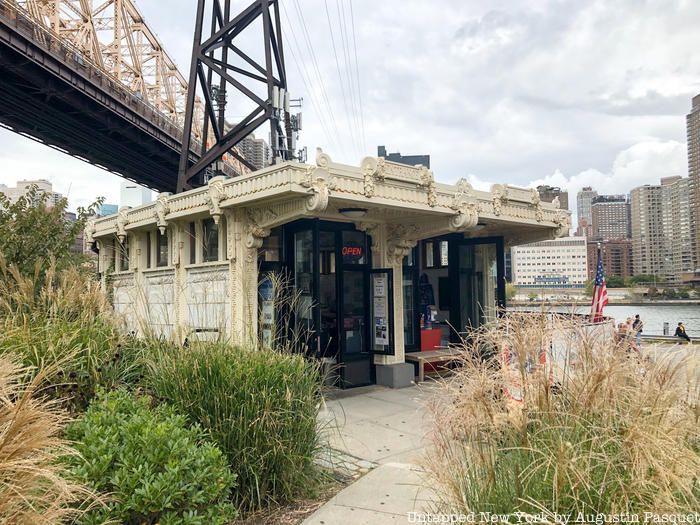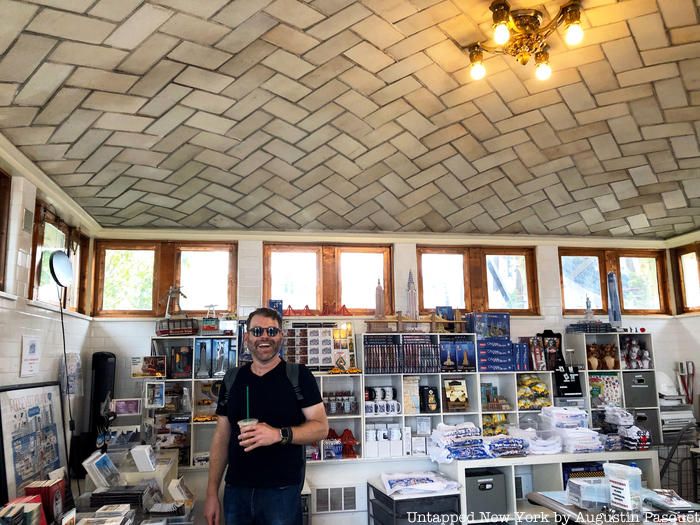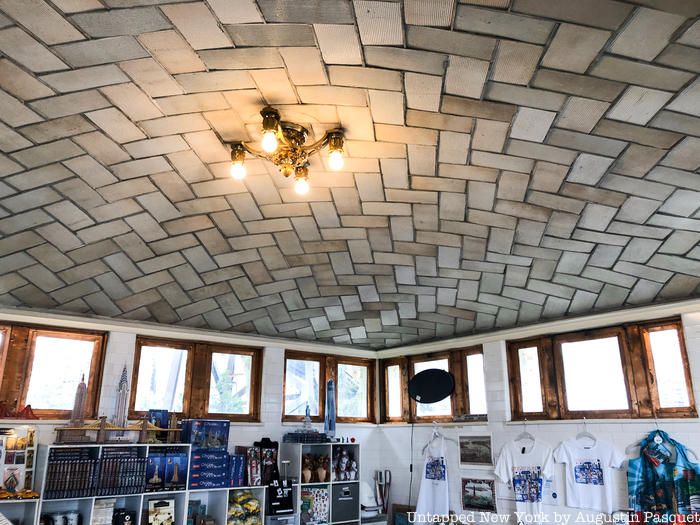Last-Minute NYC Holiday Gift Guide 🎁
We’ve created a holiday gift guide with presents for the intrepid New Yorker that should arrive just in time—


A few steps after getting off the Roosevelt Island tram, you will be greeted by a stately but tiny welcome center. The adorable structure has a rather illustrious history, which you can appreciate on a visit with the friendly staff inside. Run by the Roosevelt Island Historical Society (RIHS), the visitors center opened in 2007 and sees between 55,000 and 60,000 visitors each year. But over the course of more than half a century, the structure has moved twice between boroughs and finally, over to this location.

The kiosk itself dates to around 1909 when the Queensboro Bridge once had a trolley line. This trolley had an underground station at 2nd Avenue and went to Astoria, Flushing, College Point, Corona, Steinway and Queens Boulevard. There were five kiosks, located between the inbound and outbound lower level roads between 59th and 60th Street.

Like other parts of the Queensboro Bridge, the visitors center is one of the places in New York City you can find Guastavino tiling. The recognizable tile arch system, created by Guastavino and implemented by him and his son can be found all over New York City, including Grand Central Terminal, Ellis Island, the decommissioned City Hall subway station, and many more places. But rarely can you appreciate the tiles in such close quarters as in the Roosevelt Island Historical Society Visitors Center.
[post_featured_tour]
The Guastavino technique is used to create vaulted arches that consist of layered terra cotta tiles arranged in a zig-zag, most often, herringbone pattern and sealed with specialized cement. The structures that incorporate this architecture are also designed to be fireproof and incredibly stable. They can hold up immense buildings and structures, or small ones like the Roosevelt Island Visitors Center.
The last trolley ran on this line in 1957 and three of the five kiosks were demolished. One was moved to the Brooklyn Children’s Museum in Crown Heights where it functioned as the entrance to the museum until the museum was completely redesigned. Judith Berdy, President of the Roosevelt Island Historical Society, spearheaded the efforts to get the kiosk moved to Roosevelt Island.

Berdy tells Untapped New York, “We heard that the Brooklyn Children’s Museum did not want to use their kiosk, in 2003. We investigated and told the museum we would like it for the RIHS Visitor Center.” Around the same time, Berdy also heard that the City wanted to remove the kiosk that is at the foot of the Queensboro Bridge on the Manhattan side and move the one that was in Brooklyn there. The kiosks were part of the Queensboro Bridge when the structure was added as a New York CIty landmark in 1974, and the five kiosks were mentioned in the designation report. RIHS approached the Landmarks Preservation Commission, and the agency asked the City to restore the kiosk on the Manhattan side.
Berdy says the whole process to get the new RIHS visitor center took four years to get government approval, fundraise for the move, repair the building, and open the visitors center. It was disconnected from a concrete foundation that had greatly elevated the structure, put onto a flatbed truck, moved to Roosevelt Island, and craned into place. Then began the process of restoration.
Inside, you can find answers to any of your questions — especially if you have the luck to meet Berdy herself, who is the resident expert of Roosevelt Island. You can also purchase books, postcards, t-shirts, games, and other items related to Roosevelt Island and New York City as a whole. Berdy tells our readers, “We are in our 14th year and would love to meet with you!
Join us on our upcoming tour of Guastavino’s New York, where you will see the gorgeous tiles in the Queensboro Bridge and the kiosk, amongst numerous other locations:
Subscribe to our newsletter